Fly Fishing For Peacock Bass, Part 1
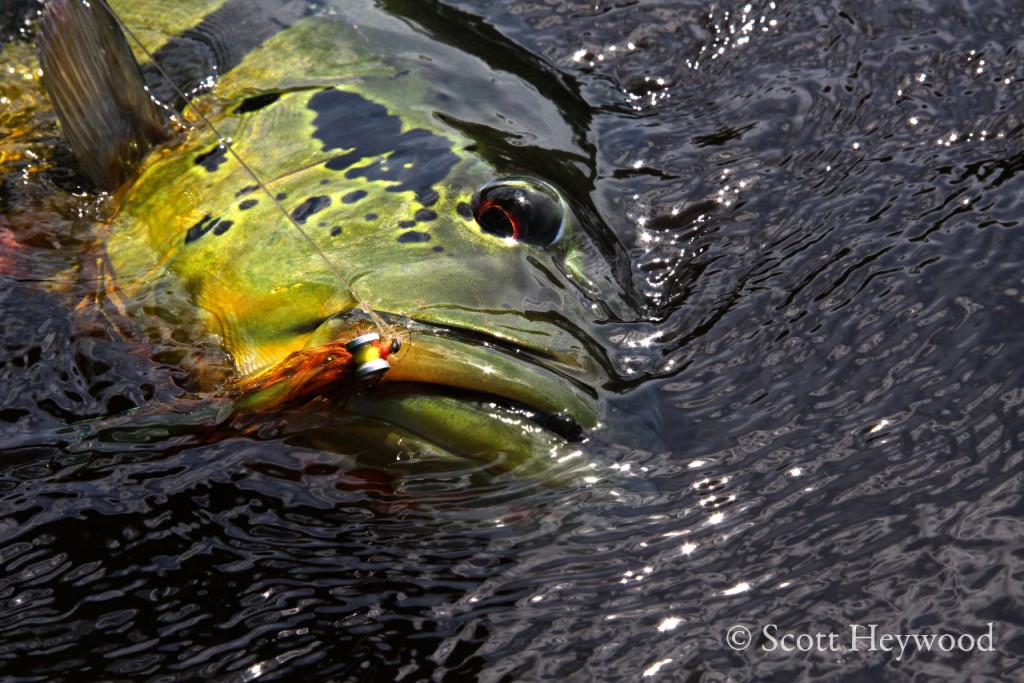
I’ve been very blessed to have fly fished many destinations around the world.
All have been amazing trips, but one destination in particular I hold close to my heart. Every time someone asks me what’s the coolest place I’ve fly fished, without any hesitation, I always reply fly fishing for peacock bass in the Amazon. Combine the extreme beauty and remoteness of the Amazon Basin with the opportunity to battle one of the most powerful freshwater gamefish on the planet, and it’s pretty easy to see why it ranks at the top of my list. That’s not even factoring in the other bonuses you’ll receive, like catching several other species of fish and witnessing all the diverse wildlife.
“While beginners always seem to catch fish, the persistent skilled angler wielding a precise cast is more often than not rewarded for his/her hard won mastery. Make a good sidearm cast between two logs under a tree and it might be rewarded. Hit that bit of flashing neon green or quickly reload to hit a laid-up chunk of muscle and madness 20 feet off the boat’s bow and it just might work. Peacock bass fishing is intriguing fishing. It is shoulder burning, forearm aching and finger cramping to be sure. There will be snags hooked, lines fouled and fish missed. It is at times maddening, frustrating and patience testing, but ultimately exhilarating, very satisfying and all consuming…and yes, as cliched as it might sound, addicting.” Scott Heywood
Making a trip to the Amazon used to be one of the most economical
Read More »Pack The Heat So You Can Pack it Out
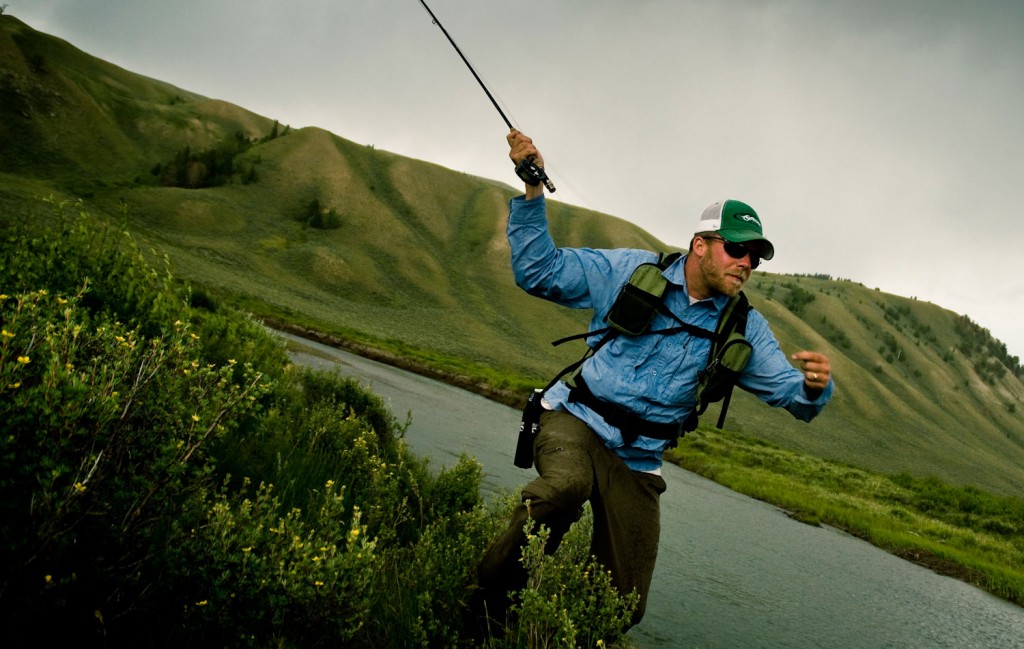
NO TREES HERE TO CLIMB AND I CAN BARELY SEE THE TRUCK WITH MY NAKED EYES FAR OFF IN THE DISTANCE.
The recent run-in with the local WYDNR officer, who just gave me the run down about heavy bear activity in the area, has got me the heebie-jeebies. I’m trying to let loose and be one with the rod, but I can’t stop from thinking I’m smelling wet dog in the air, and I’m terrified of what could be lurking behind the thick moose brush out of sight. If you’re in the process of planning a trip into the deep wilderness where bear, moose, and other dangerous predators thrive, you just might consider purchasing a canister of pepper spray, and keep it holstered on your side. Hell it could save your life.
Two years ago, I stumbled right on top of a Boon & Crockett moose bedded down during a short hike-in to a secluded stretch of the Snake River. Luckily, we both decided to flight in opposite directions, and I only had to change my britches before wetting a line. Guiding in Alaska one season, I somehow managed to stay under the radar, as two giant brown bears went toe to toe battling over a spawning bed within inches of my outpost tent. And I’ll never forget the feeling of total panic, when I walked up on a fresh bloody mule deer kill on the Upper Hoback River this past July. With my heart pounding out my chest, and the realization of no one knowing my whereabouts, I quickly said the hell with fishing, and high-tailed it back to the truck before I became desert.
We often drop a thousand dollars or more for our out of town fly fishing trips without giving it a second thought. That’s why I find it ironic, that when we get there, we gawk at the $50 price tag of a can of pepper spray. I’m not sure if it’s my life experiences that’s making me wiser, or if I’m just getting softer in my old age, but I’m damn sure of one thing. I’ve already used up all my get out of jail free-cards with
Read More »Cat Island Bones
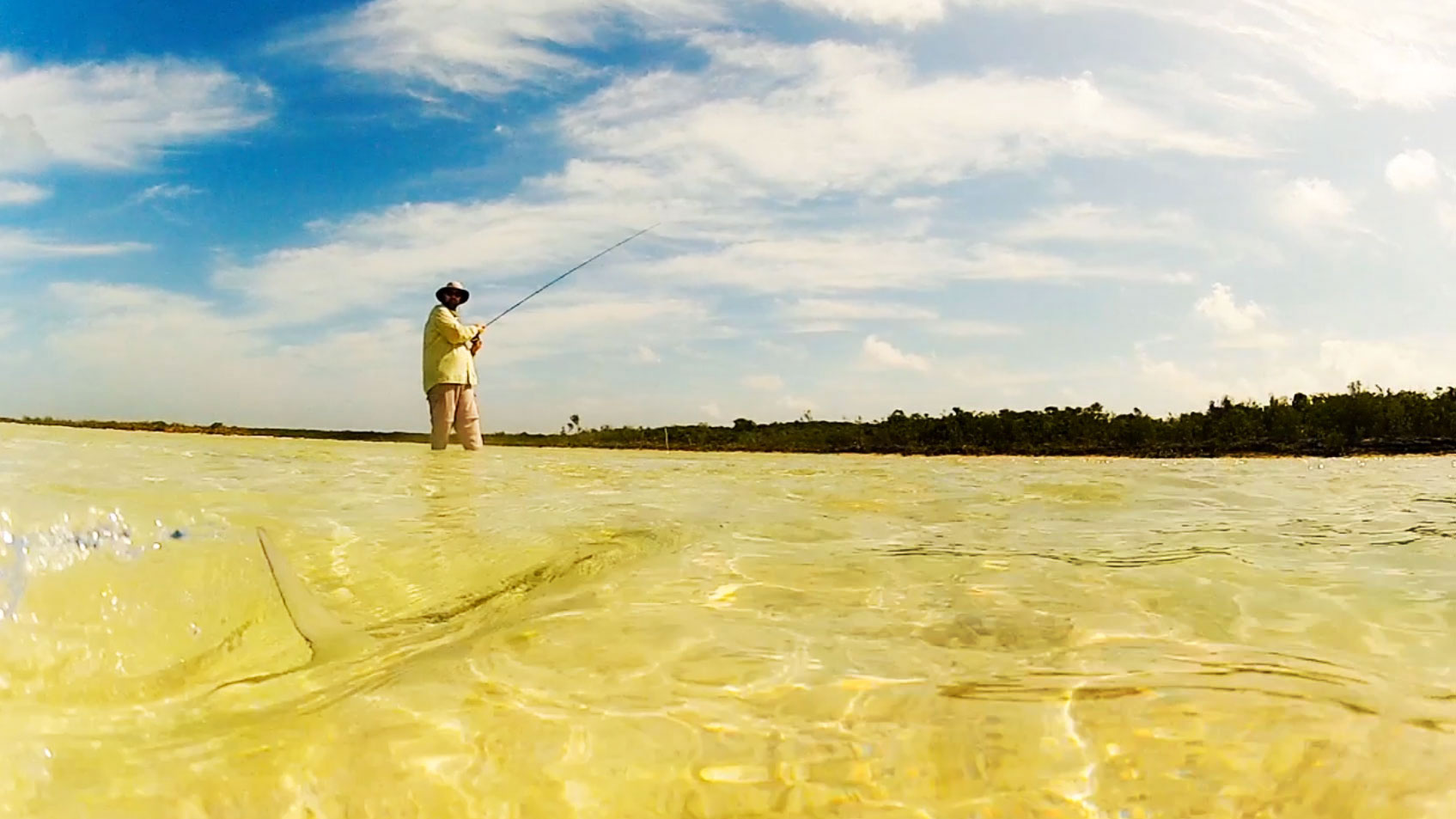
WHITE SAND, BLUE WATER, BONEFISH AND RUM. WHAT MORE DO YOU NEED?
Cat Island is not known as a bonefishing destination. It’s a quiet island with beautiful beaches, warm people and modest fishing opportunities, compared to its neighbors. It’s not South Andros or Bimini but it’s a place I have grown to love.
The flats fishing is purely a DIY scene. The fish are small but really spooky and that makes them rewarding to catch them. They are a food source for the locals, so the fish who are on the flats have earned that right. I take a kayak and paddle to some flats I know to spend the day wading. The bonefish are always good to me.
It was inevitable that I get a GoPro camera. I took it with me on my last trip to Cat Island and shot this video. So, have a click and enjoy five minutes of Cat Island Bones!
Read More »Simms G3 Guide Jacket and Flyweight Access Boot
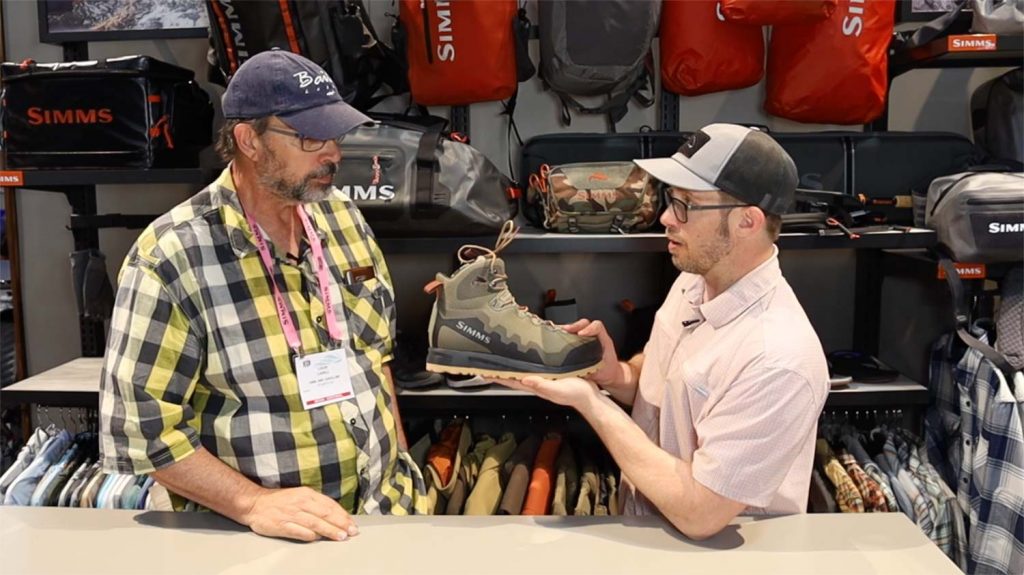
Some cool and very technical new gear from Simms. With the stellar redesign on the G3 Wader, Simms had to update the industry standard G3 Guide Jacket. It’s a smart and sharp looking update to an essential piece of kit we all love. The new Flyweight Access Boot, however, is something completely new. It weighs next to nothing and in the list of cool technical features is the Vibram Hydroflex sole, which may be the first rubber sole to actually work. Watch the video for all the details on the new G3 Guide Jacket and Flyweight Access Boot.
Read More »Situational Awareness and Flats Fishing
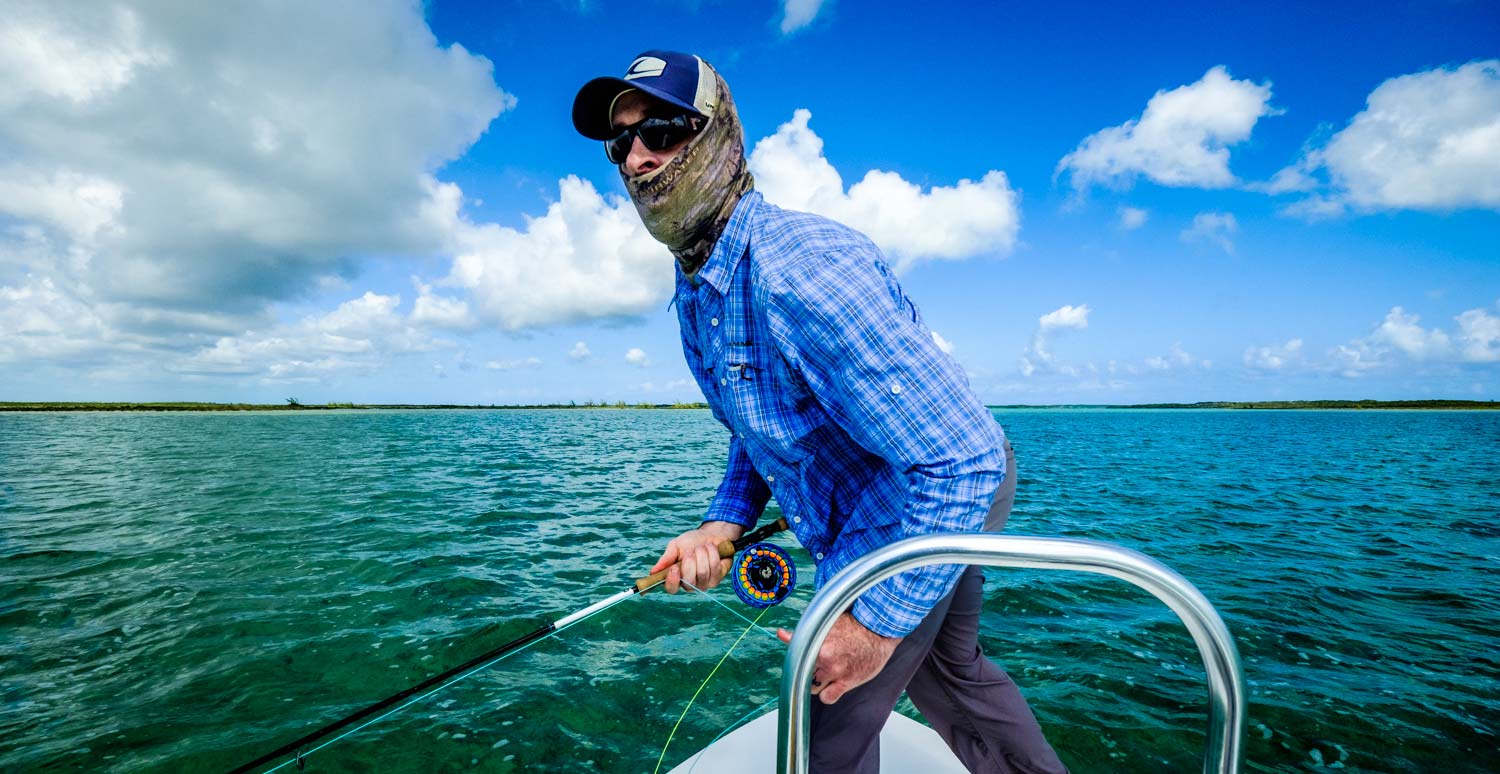
Fly-fishing saltwater flats requires many specialized skills, but none are as important as situational awareness.
Trout anglers revel in taking their time, analyzing the feeding patterns of fish and planning a successful presentation. That’s a luxury saltwater anglers can’t often afford. Things happen quickly on the flats, and it’s the prepared angler who catches fish. Flats fishing is hunting fish. Generally, the fish you are pursuing are hunting as well. They are constantly on the move and highly aware of changes in their environment. For every fish you see, there is a window of opportunity where you have a chance to make a good presentation. That window opens and closes quickly, and when it closes, it rarely opens again. An angler’s timing is often the single most important factor.
Standing on the bow of a skiff looks peaceful, and once you are comfortable with the process, it is. Below the surface, a good angler is keeping up with a laundry list of variables, planning, and calculating their best response to every possible scenario. Keeping up with current speed and direction, boat movement, water depth, lighting and the changing structure of the flat. When a fish appears, their may not be time to think about whether you should cast forehand or backhand, or how far you should lead the fish. You may need to react quickly and instinctively. It sounds more difficult than it is. With time it becomes second nature.
I spend a lot of time on the boat with anglers who are new to flats fishing. The thing I see kill opportunities more than anything else is a lack of situational awareness. While keeping up with light and water movement is somewhat advanced skill, it’s the simple things that are the most common problems. Simple stuff like line management often spoils shot after shot. A guide told me last week that he had a client who had a thirty foot shot at a school of permit. The client false casted wildly with no idea that his fly was hooked in the stripping mat. Nobody wants to be that guy.
Another simple error I see ruin a lot of good shots is anglers who never move their fly. It sounds crazy but it happens with startling regularity. A fish appears, the angler makes the cast and starts to strip, anxiously waiting for the tug that never comes, because the fly is sitting dead on the bottom because the boat is moving toward the fly faster than they are picking up line. Then when the guide calls for another cast, the pickup is loud and spooks the fish, because of all the slack.
Often it’s as simple as having your fly and leader in good shape when it’s time to make the presentation. An angler may stand on the bow for twenty minutes with wind knots in their leader or trash on their fly. It’s too late to check your setup after a fish refuses the fly or breaks the leader. These kind of simple mistakes can be heartbreaking on days when opportunities are limited. Fortunately, they are easy to avoid by simply paying attention.
Here are 10 things you should always be aware of when fly fishing saltwater.
Read More »Bob Is A Hero
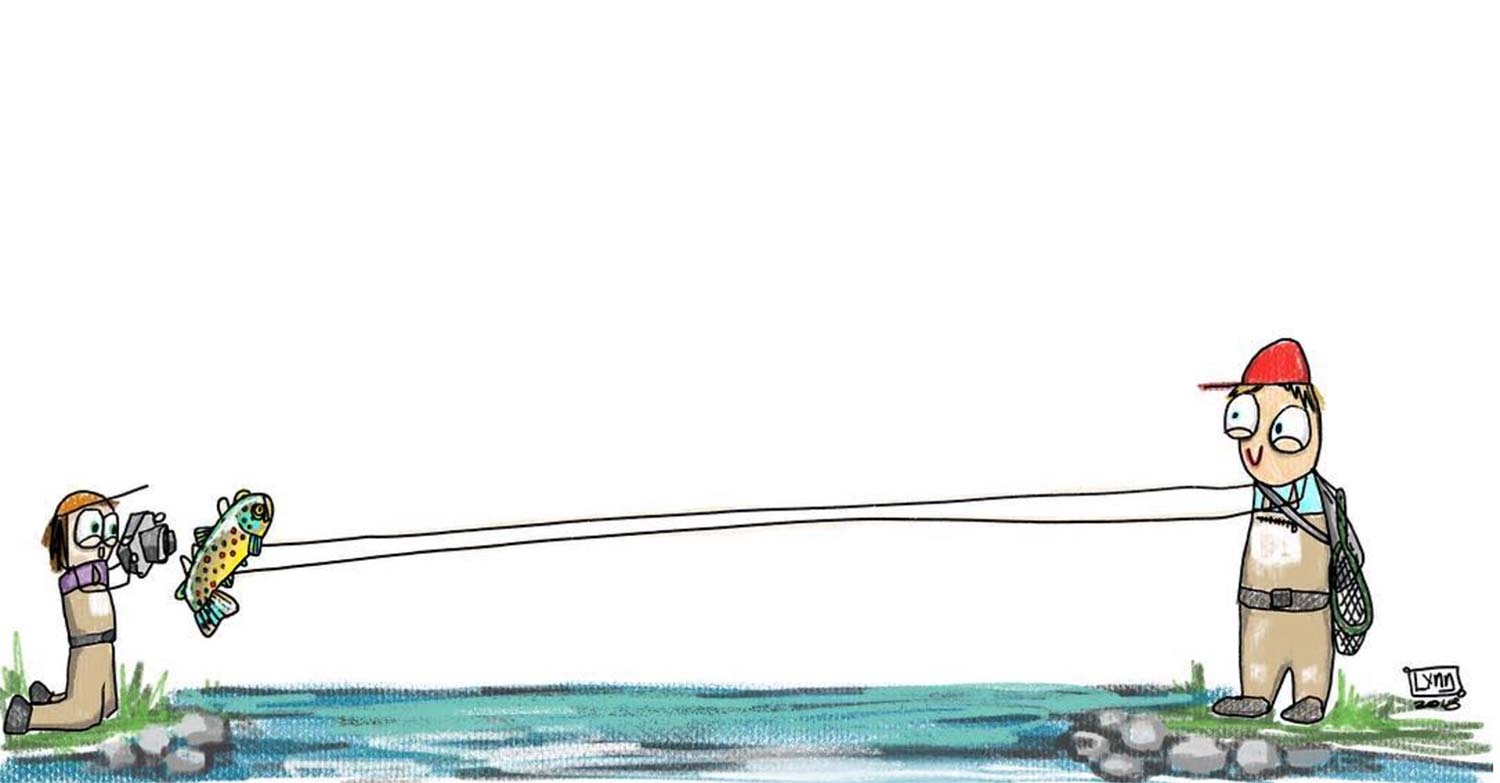
Bob knew how to get that perfect hero shot.
I think Andrea Larko has been following Justin and I around on the river. I guess the secret is out. Check out Bob and much more of Andrea’s work on Etsy.
Read More »Popping The Ball, Why Guides Release Fish
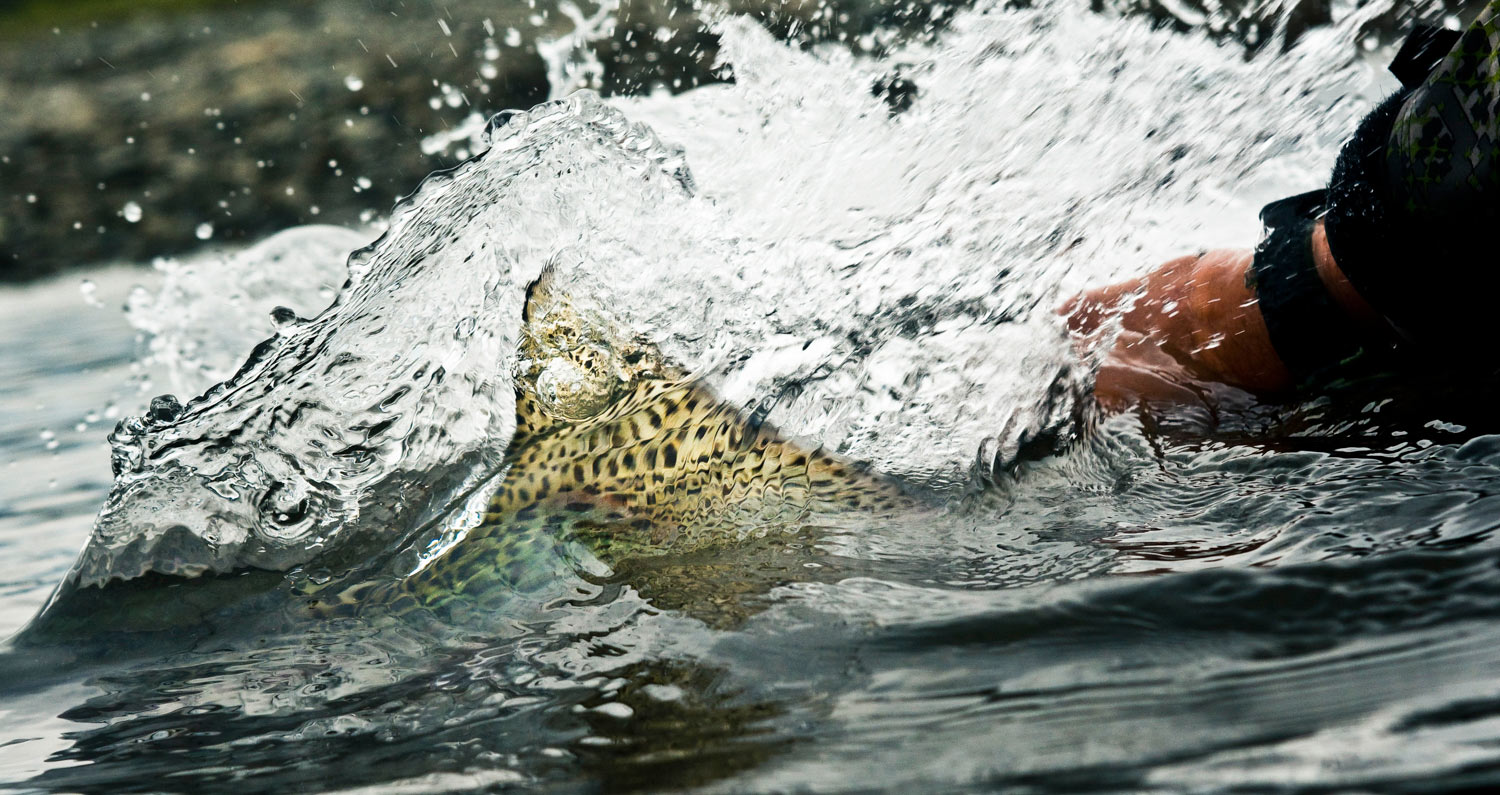
By Brian Kozminski
If you popped a basketball every time you make a basket, you might be missing the point.
It’s a burning issue, and hot topic across the midwest right now. Nothing new for me, really. I received a call from a potential client the other day, I was just getting done washing off the mud and cedar debris from the Adipose in the drive-thru car wash, so I decided to take the call. The kind lady first asked if I was Catch & Release?
“Well, of course I am, ma’am.”
“But we want to fish up there next week when we are up for vacation. Can’t we keep the fish we catch?” replied the lady.
I had to take the opportunity to explain myself. I am an advocate for C&R, but also believe there is a time and place for selective harvest—meaning taking out certain sized fish in a population that is self sustaining in order to ensure future healthy size class, whether warm water or cold water species.
“I would gladly take you fishing, but if I let you keep fish, that would not only deter the quality of guide trips next week, month and next year, but also, if the word got out that True North Trout catches and kills trout, I could quickly gain a negative reputation and lose potential clients. It works like this: if you popped a basketball every time you make a basket, you might be missing the point. The relaxation, the art of tying and fooling a fish on a fly, therein lies the reward and why we chase eight-inch brook trout with a three-weight rod. Fly fishing is about the peace, the serenity and the enjoyment of seeing the beauty in nature around us.”
“But what if we let the females go?” she retorted. “My husband and I would like to learn to fly fish.”
She was relentless. I felt backed into a corner. How can I turn around a possible learning situation for these anglers and for myself?
“I would be more than happy to take and show you how beautiful the river is and some fly fishing technique, but I won’t purposefully kill or take a fish home. Simply put, if you catch a nice 18-20″ trout, I know where he lives, and perhaps have the opportunity and chance to share catching that mature fish with future anglers, even a couple more times in a year, and next year, he is a 22-24″ fish. If we take him out of the ecosystem, there is zero percent chance of catching him again or that he will be a two-foot streamer crashing trophy next season.” the best I could come up with.
“Well, maybe. Let me talk with my husband, we would like to learn how to fly fish. Do you know any other guides that will let us keep our catch?” She is not giving up easily.
“I am sorry, I do not, sounds like you are looking more for a charter boat captain and would enjoy a trip on Lake Michigan trolling for salmon or lake trout.”
“Thank you. We will get back with you. Good Bye.”
“Thank you. I am sorry. I hope you understand. If we as guides killed every fish we catch, we wouldn’t have a job in a few short years, similar to a restaurant that gives away a lot of free drinks, they don’t manage the resource very well and end up dry.”
Scenario phone calls like this seem to pop up every other week or so. Kind of crazy when I think about it. What is driving this customer my way? Google Search shows TNT at top ten? Most of these anglers are from out of state. I understand the need to bring a fish home, a bit of a keepsake from Michigan, and understandable with our of state license fees. But these fees are exactly what helps keep Michigan an often sought fishing destination. What about where they are from? I see a trend in Ohio, Indiana, Illinois and even Georgia residents seeking a piece of our northern Michigan heaven. So I looked into these states and why the popularity.
First, The PURE MICHIGAN campaign. Laugh a little. I did. But a considerable
Read More »Shea Gunkel’s Radiation Baetis
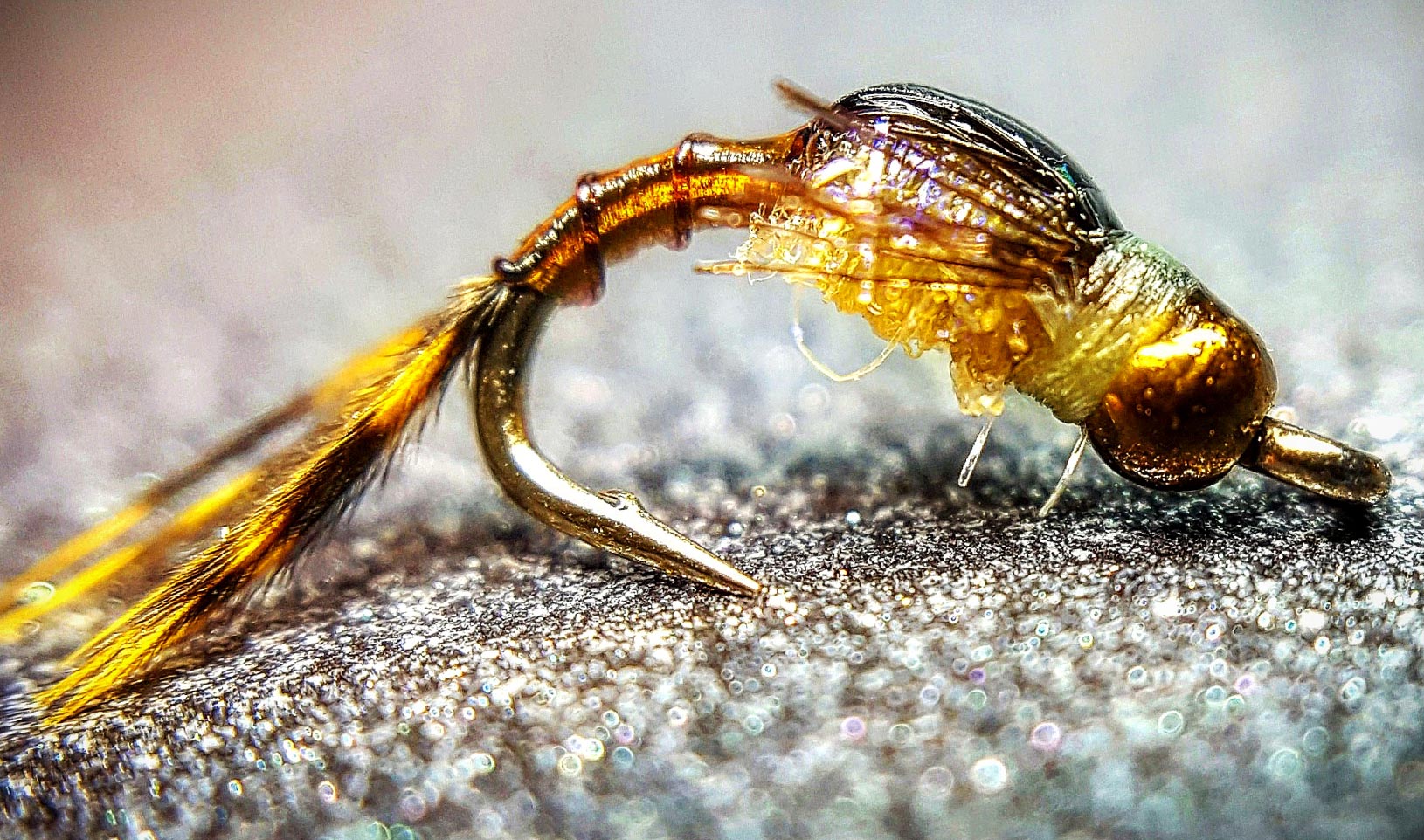
By Bob Reece
The creation of some fly patterns results purely from the need to fill a niche.
Others however, result from a blending of emotions and experience. This latter path of development leads signature Umpqua tyer Shea Gunkel to the creation of his Radiation Baetis.
Moms are in integral part in many of our lives. A couple years ago, Shea received news that his mom had been diagnosed with cancer. His heartfelt emotion drove him to create a new pattern, the original highlighted with pink, in an effort to raise awareness for cancer and show support for his mom.
The earlier versions of this bug were often pinned in hats and sweaters, where they made frequent trips to chemotherapy treatments. As time passed, Shea began to see the pattern in an additional light. After fishing it heavily and sharing samples with guides around Colorado, on the water success stories began to flow in. Shea then
Read More »Bonefish Fly Lines: Beyond The Cast
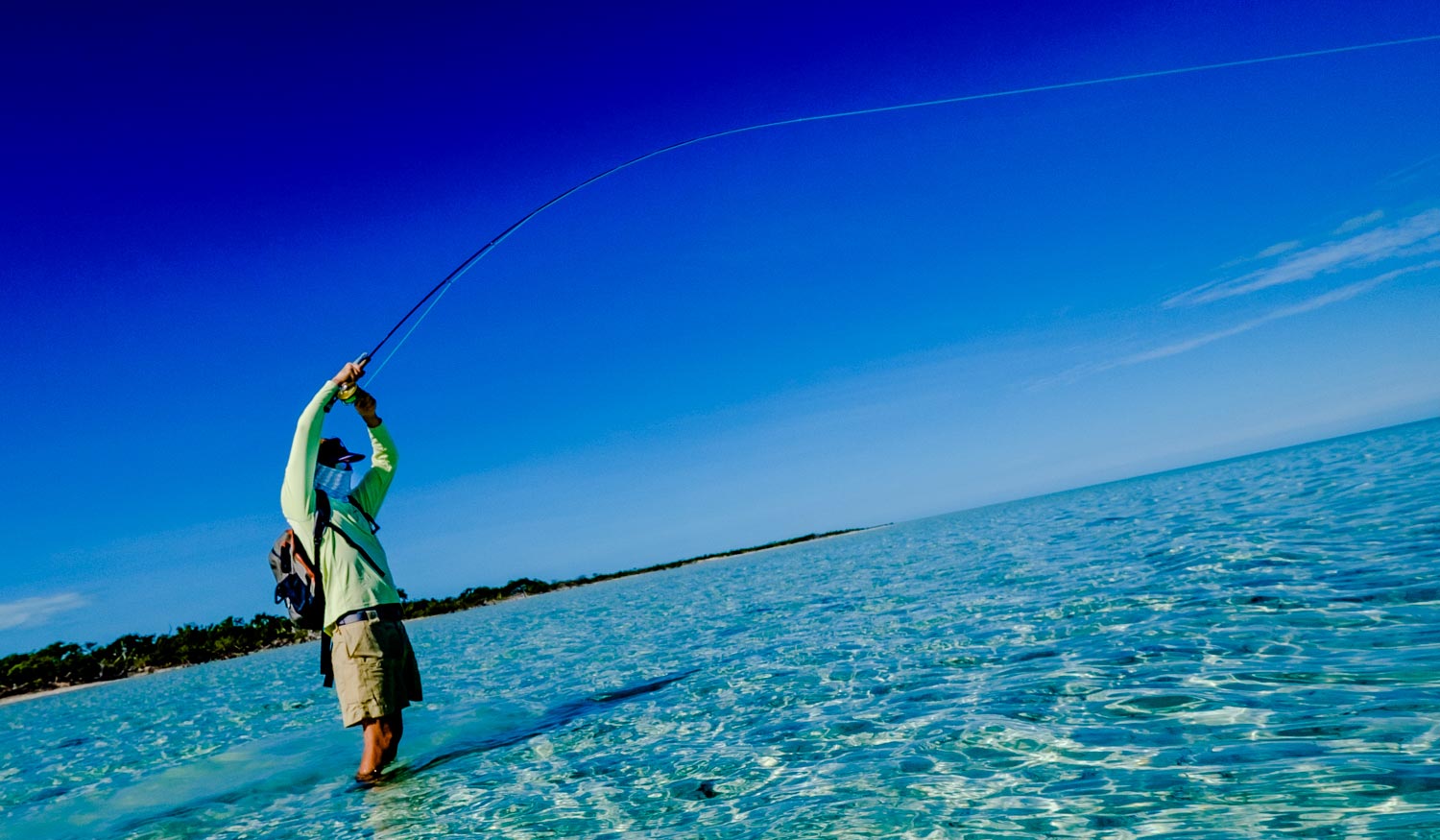
By Louis Cahill
Does having the right fly line mean catching more fish? Absolutely.
Having the right fly line for the species you’re targeting and the conditions you’re fishing is key for a successful day of fishing. You can buy a line from almost any manufacturer bearing the name ‘Bonefish’ but that doesn’t mean it will be the best line for the day you are on the water. It may do a great job of loading your fast action saltwater fly rod, but not catch you a lot of fish.
When shopping for a fly line, we focus almost completely on how the line casts. Of course it’s important to have a good cast but often it’s too late when we stop to think about how the line we chose fishes, and there are some big differences. This, of course, applies to all types of fishing but is especially pertinent to bonefishing, so I’m using that as an example.
It’s very common these days to see anglers over-line their fly rods. Putting a 9-weight line on an 8-weight rod absolutely makes it easier to load, but that ease of casting may come at a price. I fished recently with an angler who had paired his Sage One 8-weight with a 9-weight RIO Outbound Short. He liked it because it felt like his Winston trout rod. The only problem was, he couldn’t catch a fish.
There are three things wrong with this setup. First, the head diameter on that line is huge! It casts a huge shadow and makes a thunderous racket every time it lands on the water. It spooked every fish on the flat. Secondly, the short head meant that he had to strip the line in completely every time he recast. There’s no time for that in bonefishing. You need a line you can pick up and recast quickly. Lastly, by slowing the action of his rod down to that of a trout rod, my friend had lost all of the benefits of having a fast action rod.
I’ve seen this problem go the other way, too. I tarpon fished with a buddy a while back who had chosen a RIO
Read More »New Orvis Pro Bootfoot Wader and Pro Boot with Hybrid Sole
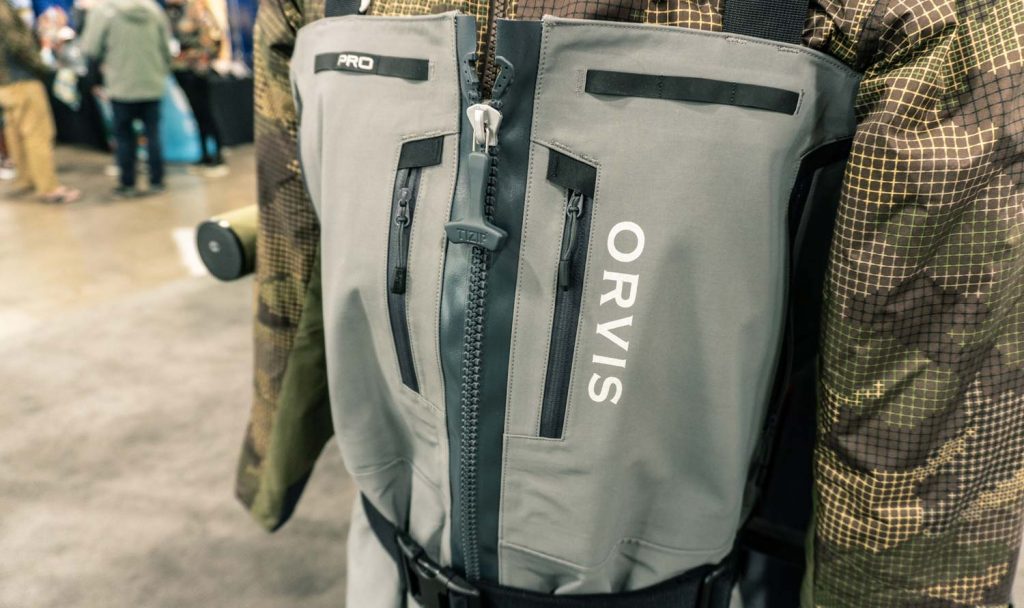
Check out the new waders and wading boots from Orvis. Orvis has a couple of new options this year for your wading excursions. The Pro Boot is now available with a new and improved BOA system, as well as a hybrid sole that combines felt and rubber. The new Pro Wader now comes in zip-front and boot foot, for extra warmth in the winter. Watch the video for all the details on new Orvis Pro Boots and Waders. Louis Cahill Gink & Gasoline www.ginkandgasoline.com hookups@ginkandgasoline.com
Read More »